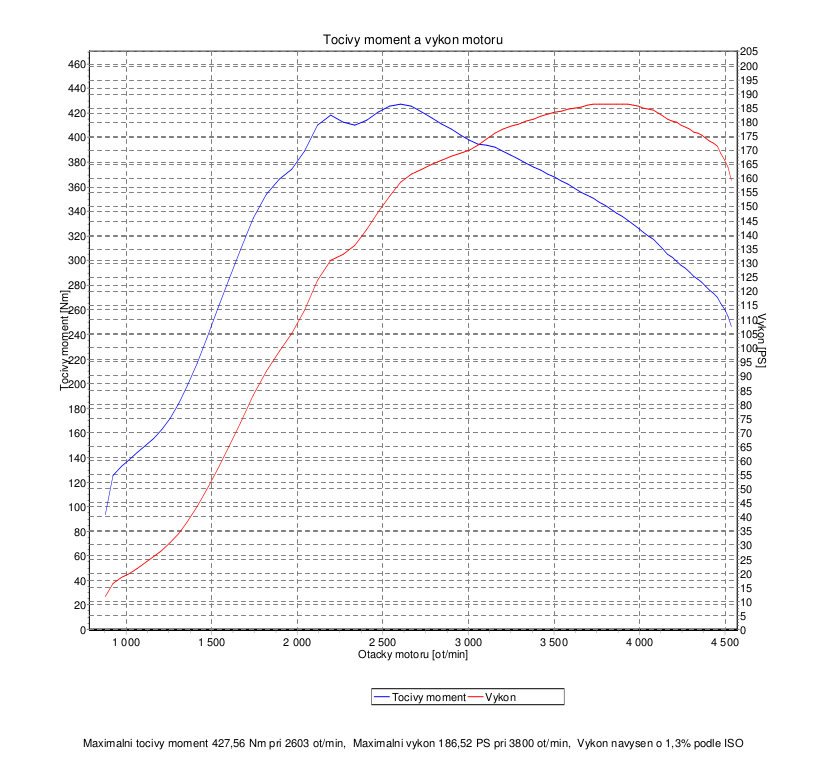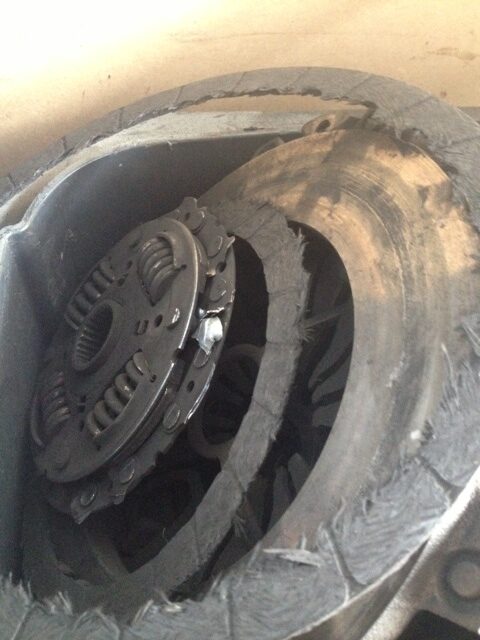Everybody wishes for max. torque and power at low revs because there is also low fuel consumption. Sadly it doesn’t work this way. So what is secret about optimal utilization of engine output?

Energy/fuel = heat = power = heat
As example, I will use my Skoda Octavia HR I because I calibrated ECU myself and know all necessary about my car.
Laws of Nature
Family cars are optimised for fuel economy and in last decade for emissions. Even so called sport cars such as Skoda Octavia vRS is simply calibrated for early mentioned reasons.
Everybody love useless dyno graphs and how high their power output goes. Truth is, it doesn’t matter. There is bad chiptuning and very bad chiptuning. Very few so called chiptuners can really calibrate engine properly.
People love all BIG, LARGE just because they have something small to compensate for? It is modern disease created by marketing.
We all have high torque figures at low revs but car doesn’t want to drive like racing car. Why? Check out dyno graph above by; max. torque at 1800-2000rpm and power output is just 60kW (80HP) for factory tuned car. Max power output at 3900rpm.
How to extract maximum from your engine
Once again, check out dyno graph above by. The torque and power curve cross at certain rpm and that’s where you have to be for optimal power output of your engine. In other words, it is all down to your shifting skills and how quickly can you up-shift.
My years in extreme sports and motorsport tell me, I have to rev my engine up to 3200rpm so that after I’ve gear in and clutch engaged at 2800rpm. That’s the bottom rpm limit for me. In mountains, I rev my car to 3800rpm.
Let’s talk about normal daily driving; not everyone is spirited driver. As I said before…most ECU remaps are bad because eExperts push the max torque at low revs and misinformed customers suffering from “high dyno graphs euphoria” are doomed for expensive disaster.
Octavia 2.0TDi 103kW and its turbo is at its optimum at around 2500rpm – shift at 2800 rpm and you get most of your engine on flatlands.
There is sure way how to kill your car in no time
- low revs = excessive stress on clutch, gearbox, crankshaft, bearings…. furthermore, excessive build up of carbon deposits in turbo
- what you save in fuel; you’ll pay dearly later on
- medium to high revs wear engine block walls; find the compromise between
- it is all about maintenance
Some mechanical facts about VW cars
- dual fly mass OEM clutch can handle around 350 – 400Nm; factory tuned torque is 320Nm. Bad/most tuners love to push it hard at low revs..up to 420Nm. Start saving for a new single mass clutch. There is outcry in all car tuning forums about “rubbish DFM clutches”
- 02Q/M350 six gear gearbox can handle around 500Nm. It is all down to your driving style. Higher revs = less torque
- GT16/17 turbo has max boost at around 2500rpm and it is able to handle around 2.6 bar boost with thermal efficiency of 63%
Bottom line
I like to keep torque down at low revs and let it ride wild at optimal revs where turbo is at max boost. In case of my small GT16 turbo – optimal engine revs for turbo is around 2500rpm. I intentionally reduce torque in ECU maps so that I’m forced to use higher revs where more power and less torque is required.
1400kg Skoda Octavia needs around 200Nm to run at flat-lands. You still have lots of torque left. I live in alpine country and 300Nm is minimum on alpine roads. Try to shift gears in steep hill at low revs, I dare you 😉
I still have my factory equipped DFM (dual fly-mass) clutch and 190k km on ODO. I never save money on wrong places (low engine revs) because it always cost more in long term !!!

So, which type of power/torque configuration is better:
Opel Insignia OPC 2.8 325hp that torque and hp are increasing both with RPM until 5500rpm
or
BMW 528i 245hp where torque is reaching the top fast and it;s linear only power will increase after (1300rpm – 4800rpm – 350Nm)
i forgot to leave the links:
https://www.automobile-catalog.com/curve/2009/2537135/opel_insignia_opc_sports_tourer.html
https://www.automobile-catalog.com/curve/2011/1589525/bmw_528i_xdrive_touring.html
there is not better or worst, there is only incorrectly used. BMW is 2.0 and Opel 2.8 V6 – you are comparing apples with beer.
BMW keep it artificially low and constant as any manufacturer – VW 2.0 TDi is artificially kept at 320Nm but can be pimped to over 400Nm. Whereas Opel push it to max as every hard core car enthusiastic does 😉
Both cars have optimal engine speed around 5000 rpm where you get most bang for bucks.
I wasnt really comparing 2.0 from BMW and 2.8from Opel. I was comparing the torque delivery and I was asking because, now, I have Skoda Octavia 2.0tdi 140hp/320Nm and was thinking to replace with BMW 528i or 525d, F11 or the OPC. Because I want the impossible:))… high power, high torque and low taxes and fuel consumption – which are not applicable for the OPC but I can close my eyes on this matter here. Somebody was saying to just work on the Octavia’s software to lift it up to ~170hp and ~350-360NM (as you described above) and I will be happy. Problem is that (in my opinion) sport/fast car is kinda useless if it is only front wheel drive…
That’s why I am fan of Subaru symmetric AWD – most simple and balanced cars 😉
Don’t be confused by pseudo AWD systems marketed by most car manufacturers. They use Haldex crap with electronic magic.